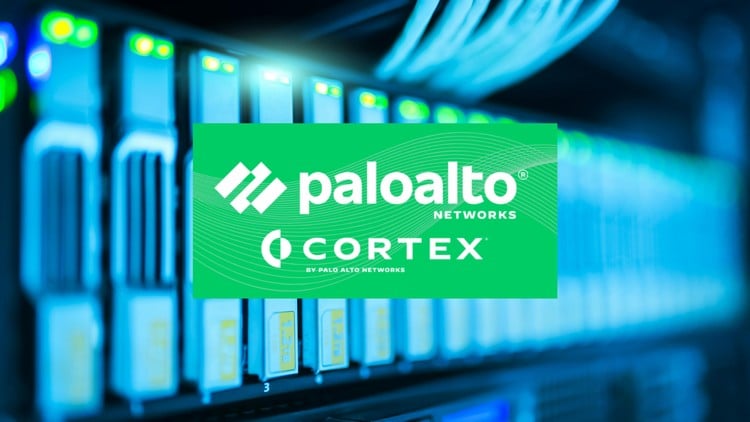
High-quality practice exams to boost confidence, identify weak areas, and prepare you for real test success
👥 493 students
🔄 September 2025 update
Add-On Information:
Note➛ Make sure your 𝐔𝐝𝐞𝐦𝐲 cart has only this course you're going to enroll it now, Remove all other courses from the 𝐔𝐝𝐞𝐦𝐲 cart before Enrolling!
- Course Overview
- This comprehensive professional certification course is meticulously designed for aspiring and practicing system engineers aiming to achieve mastery in deploying, managing, and troubleshooting the advanced capabilities of the Palo Alto Networks Cortex XDR platform.
- It delves deep into the architecture, core functionalities, and operational best practices of Cortex XDR, empowering participants to effectively secure endpoints, networks, and cloud environments against sophisticated threats.
- The program focuses on transitioning from foundational cybersecurity knowledge to specialized skills in endpoint detection and response (EDR), threat hunting, and automated incident response, all within the Palo Alto Networks ecosystem.
- Participants will gain a profound understanding of how Cortex XDR integrates with other Palo Alto Networks security products to deliver a unified and potent security posture.
- The curriculum emphasizes practical application through real-world scenarios, configuration exercises, and troubleshooting simulations, ensuring a hands-on learning experience that mirrors the challenges faced by cybersecurity professionals.
- This course serves as a critical stepping stone for individuals seeking to validate their expertise through the Palo Alto Networks Certified System Engineer (PCNSE) – Cortex professional examination.
- It provides in-depth coverage of the threat landscape and how Cortex XDR specifically addresses emerging attack vectors and advanced persistent threats (APTs).
- The learning modules are structured to build progressively, starting with fundamental concepts of endpoint security and evolving to complex incident analysis and remediation strategies.
- Participants will explore the various deployment models of Cortex XDR, including cloud-native and on-premises solutions, and understand their respective advantages and considerations.
- The course highlights the importance of effective policy creation, rule tuning, and log analysis to optimize Cortex XDR’s performance and detection capabilities.
- Requirements / Prerequisites
- A solid understanding of fundamental networking concepts, including TCP/IP, DNS, DHCP, and routing/switching.
- Familiarity with operating system fundamentals (Windows, macOS, Linux) and their security configurations.
- Prior experience with cybersecurity principles, including malware analysis, intrusion detection, and incident response is highly recommended.
- Exposure to other Palo Alto Networks security products (e.g., next-generation firewalls) will be beneficial but not strictly mandatory.
- A foundational knowledge of endpoint security solutions and their operational principles is expected.
- Candidates should possess a degree of analytical thinking and problem-solving aptitude to effectively tackle complex security challenges.
- It is advisable to have a minimum of 1-2 years of practical experience in IT security, network administration, or a related technical role.
- Basic scripting or automation knowledge (e.g., Python) can be advantageous for advanced troubleshooting and integration scenarios.
- A commitment to continuous learning and staying updated with evolving cybersecurity threats and technologies is essential.
- Skills Covered / Tools Used
- Endpoint Security Management: Proficiently managing and configuring Cortex XDR agents across diverse endpoint environments.
- Threat Detection and Analysis: Identifying, investigating, and analyzing security incidents using Cortex XDR’s advanced analytics and threat intelligence.
- Incident Response Automation: Leveraging Cortex XDR’s capabilities to automate response actions and streamline incident remediation workflows.
- Policy Configuration and Optimization: Designing, implementing, and tuning security policies within Cortex XDR for optimal protection.
- Threat Hunting: Proactively searching for hidden threats and indicators of compromise (IoCs) within the network and endpoints.
- Log Management and SIEM Integration: Understanding the importance of log data and integrating Cortex XDR with Security Information and Event Management (SIEM) solutions.
- Malware Analysis Techniques: Applying analytical skills to understand the behavior of various malware types and their impact.
- Network Visibility and Forensics: Utilizing Cortex XDR to gain insights into network traffic and conduct forensic investigations.
- Cloud Security Integration: Understanding how Cortex XDR extends security to cloud workloads and services.
- Palo Alto Networks Ecosystem Integration: Configuring and leveraging the synergy between Cortex XDR and other Palo Alto Networks security platforms.
- Troubleshooting and Diagnostics: Effectively diagnosing and resolving issues related to Cortex XDR agent deployment, configuration, and operation.
- Reporting and Compliance: Generating relevant reports for security posture assessment and compliance requirements.
- Benefits / Outcomes
- Career Advancement: Achieves a recognized professional certification (PCNSE – Cortex) that validates specialized expertise in a high-demand cybersecurity domain.
- Enhanced Security Posture: Empowers individuals to implement and manage a robust endpoint detection and response strategy, significantly improving organizational security.
- Improved Incident Response: Develops the ability to respond to security incidents faster and more effectively, minimizing damage and downtime.
- Threat Prevention Expertise: Gains proficiency in proactively identifying and mitigating advanced threats, reducing the likelihood of successful cyberattacks.
- Valuable Skillset: Acquires in-demand technical skills that are highly sought after by employers in the cybersecurity industry.
- Increased Confidence: Builds confidence in managing and defending complex digital environments against evolving cyber threats.
- Operational Efficiency: Learns to optimize security operations through automation and advanced analytical tools provided by Cortex XDR.
- Industry Recognition: Demonstrates a commitment to professional development and mastery of leading-edge security technologies.
- Contribution to Cybersecurity: Becomes a more effective defender of digital assets, contributing to a more secure global digital landscape.
- PROS
- Highly Specialized: Focuses on a critical and advanced area of cybersecurity (Cortex XDR).
- Industry-Leading Platform: Covers a widely adopted and respected security solution from Palo Alto Networks.
- Practical Skills: Emphasizes hands-on application and real-world scenario training.
- Career Focused: Directly leads to a valuable professional certification.
- Comprehensive Curriculum: Provides in-depth knowledge across multiple facets of endpoint and threat detection.
- CONS
- Technical Depth: May require significant prior technical and cybersecurity knowledge, making it less suitable for absolute beginners.
Learning Tracks: English,IT & Software,IT Certifications
Found It Free? Share It Fast!